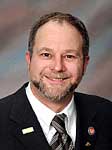
In his inaugural address, he had promised action. As historian Arthur M. Schlesinger pointed out, “It was hard to understate the need for action. The national income was less than half what it had been four years before.
Nearly 13 million Americans – about one quarter of the workforce – were desperately seeking jobs. The machinery for sheltering and feeding the unemployed was breaking down everywhere under the growing burden. And a few hours before, in the early morning before the inauguration, every bank in America had locked its doors.
It was now not just a matter of staving off hunger. It was a matter of seeing whether a representative democracy could conquer economic collapse.
It was a matter of staving off violence, even (at least some so thought) revolution.”
“Whether revolution was a real possibility or not, faith in a free system was plainly waning. Capitalism, it seemed to many, had spent its force; democracy could not rise to economic crisis.”
Roosevelt’s first job, therefore, was to restore confidence. He had already started to accomplish this with his inaugural address, which moved half a million Americans to write letters to the White House in the next few days. This new confidence could only be maintained as long as the people perceived that the administration was taking direct action to restore the economy. The first priority was the banking system.
“Before anything else could be done, it seemed imperative to clear the financial arteries of the economy” (Schlesinger).
Roosevelt had already settled on his main lines of action. Before arriving in Washington, he had rough drafts of two presidential proclamations: one calling a special session of Congress; the other declaring a bank holiday and controlling the export of gold by invoking forgotten provisions of the World War I Trading with the Enemy Act.
A few hours after the inauguration, on Saturday night, Treasury Secretary Woodin agreed to have emergency banking legislation ready for Congress when it convened on Thursday, March 9. On Sunday afternoon Roosevelt called the Cabinet together to complete the program of action. After a morning of conferences, Woodin reported that the bankers had no plan of their own. Attorney General Cummings then gave his official assent to the use of the Trading with the Enemy Act.
This prepared the way for the two proclamations, and they were issued in the next four hours.
Roosevelt decided to save the banking system rather than change it. The first problem, as the President saw it, was to banish fear. If he was to restore confidence in the system, he had to offer policies which bankers themselves would support. And he had no real alternative to restoring the existing structure.
America had no one like John Maynard Keynes in Britain, who might have conceived a genuine reform.
There was dissatisfaction in Congress with the President’s approach. Senator Bronson Cutting of New Mexico later wrote, “I think back to the events of March 4th, 1933, with a sick heart. For then the nationalization of banks by President Roosevelt could have been accomplished without a word of protest. It was President Roosevelt’s great mistake.” On the night before Congress convened, Senators Robert M. LaFollette, Jr., of Wisconsin and Edward P. Costigan of Colorado called at the White House to urge Roosevelt to establish a national banking system. “That isn’t necessary at all,” Roosevelt said. “I’ve just had every assurance of cooperation from the bankers.”
By Monday a variety of proposals were under discussion at the Treasury. Many bankers demanded that the government issue script as it had during the panic of 1907. This idea assumed that the banks didn’t have enough currency on hand to meet national needs upon reopening. But, on reflection, the Treasury turned against this proposal. If the first essential was to restore confidence, then Federal Reserve notes would be far less disturbing than clearinghouse script. It was decided that the Treasury would issue loans against the assets of the banks.
The rest of the banking bill gave the Secretary of the Treasury power to prevent gold hoarding and to take over gold bullion and currency in exchange for paper; and it provided for the review and reopening of the closed banks under a system of licenses and “conservators.” In the Treasury, men worked around the clock to translate the plan into legislative language. On Wednesday afternoon a draft went to the White House. That evening Roosevelt presented the legislation to a conference of congressional leaders from both parties.
On Thursday, March 9th, five days after the inauguration, Congress convened at noon. Almost at once it received a message from the President: “I cannot too strongly urge upon the Congress the clear necessity for immediate action.” Debate was limited to 40 minutes, and before the 40 minutes was up members were shouting
“Vote! Vote!” Shortly after 4 p.m., the House passed the bill unanimously. Just before 7:30 p.m. the Senate passed the bill 73 to 7. An hour later it was at the White House. The whole process, from introduction to final signature, had taken less than eight hours. Gold and deposits were flowing back into the system. After the weekend, the people could look forward to orderly reopening.
On Sunday evening, March 12, Roosevelt broadcast the first of what came to be called his “Fireside Chats.” In plain language Roosevelt analyzed the banking crisis and forecast the steps that lay ahead. “Let us unite in banishing fear,” he concluded. “It is your problem no less than it is mine. Together we cannot fail.”
The President took a complicated subject like banking, said Will Rogers, and made everybody understand it, “even the bankers.”
Paul Schwietering is a resident of Union Township.
